Are you an artist who badly needs a home studio design to carry on your work but cannot afford one? Well, creating an art or recording studio is possible even in your home area. With a little imagination and creative design ideas, any unoccupied area in your house may be turned into a sizable or modest art or recording studio.
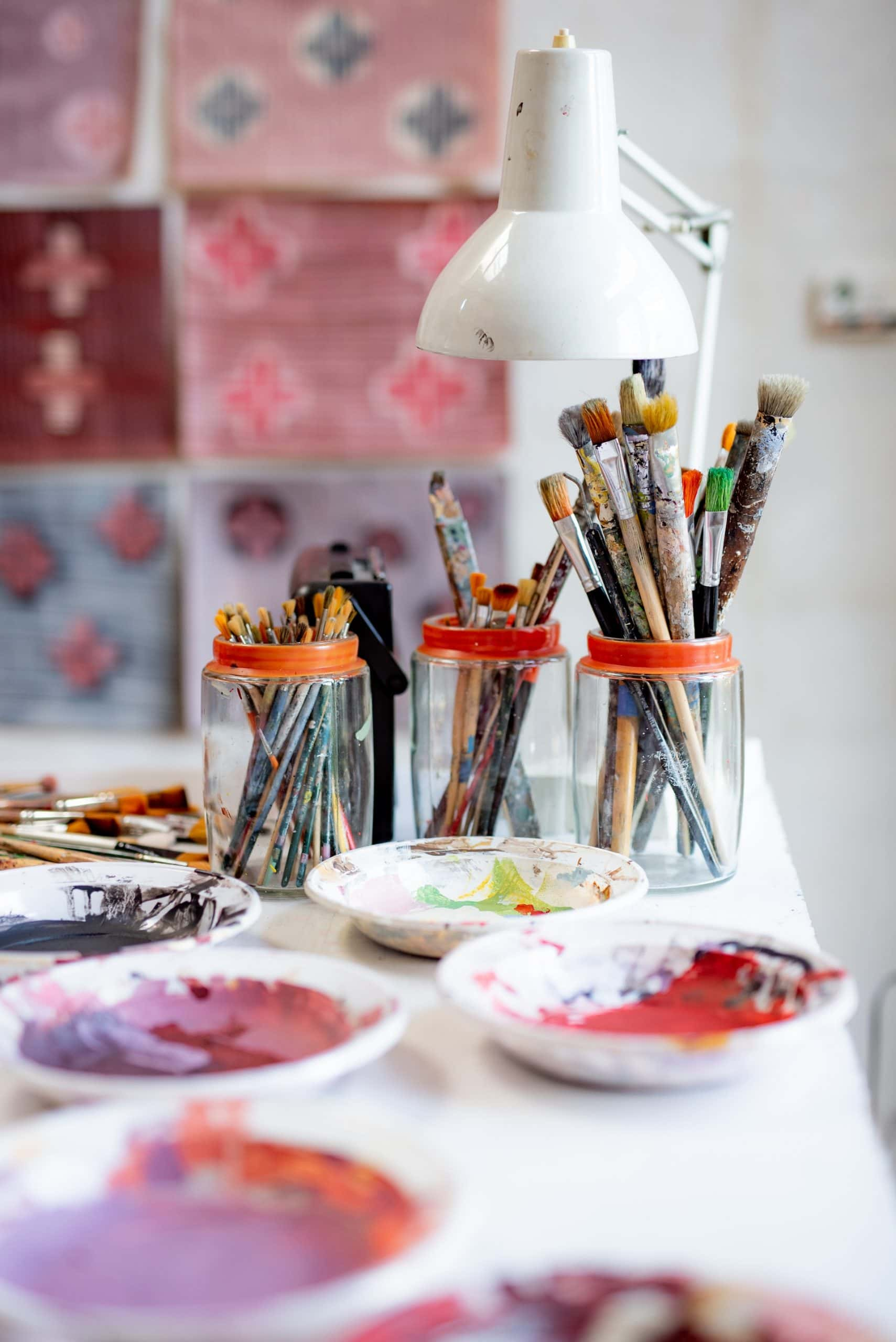
To get started, let’s look at these creative ideas and time-saving tips for achieving an excellent home studio design.
1. Repurpose a Bedroom to Create a Private Studio
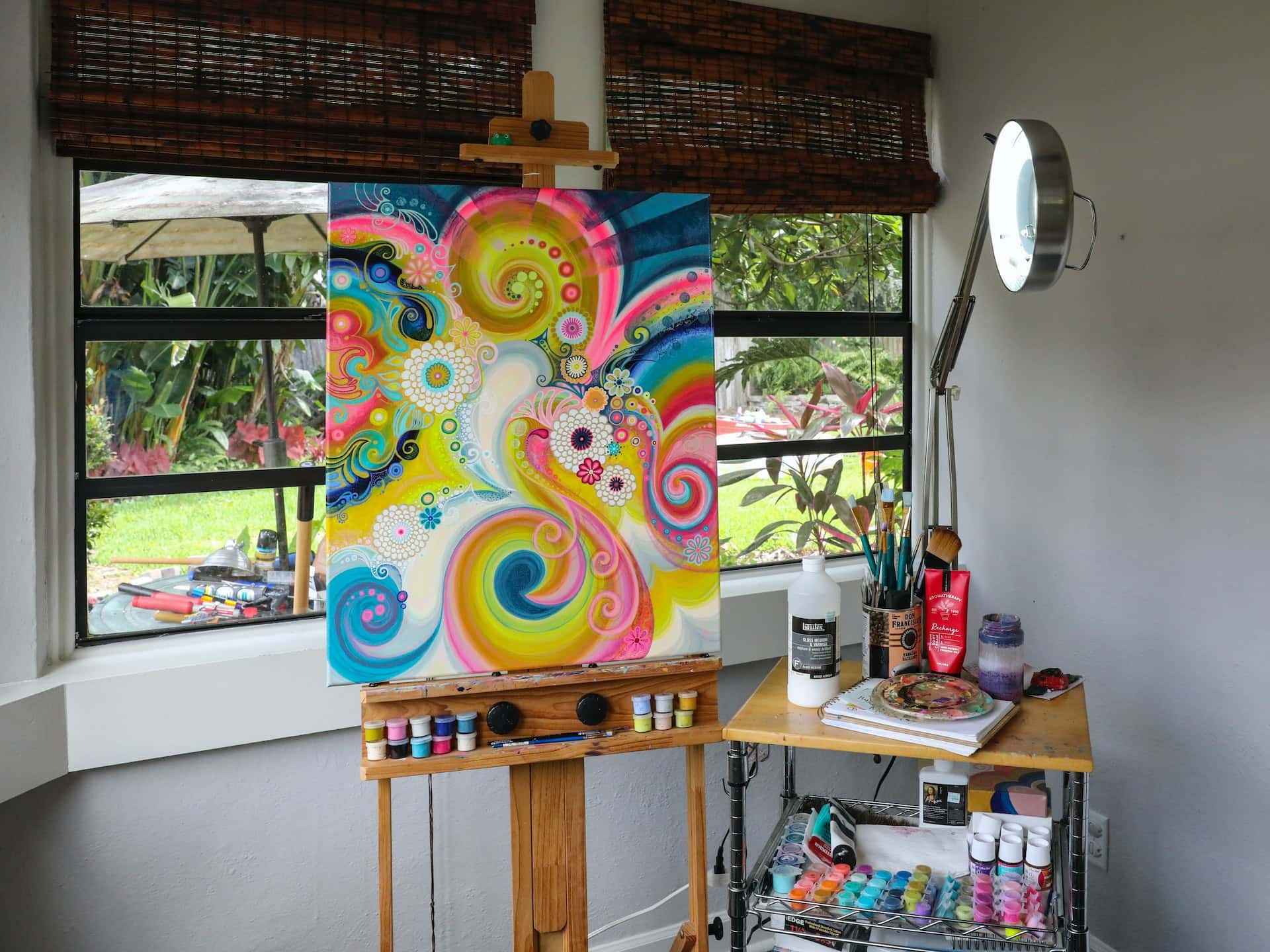
Do you find yourself more productive and creative while working in a quiet and private place? Well, then, creating a home studio design using the extra space in your bedroom would be an ideal choice ( as shown in the picture).
If you are someone who likes a peaceful setting while enjoying the view outside, building a home studio in the bedroom near the bedroom window, as shown in the picture, is beyond perfect.
Your bedroom is the most private area in your home compared to any other area. So, if you are looking for a private space for a home art studio, a bedroom is the wisest choice to go for.
Having windows (as shown in the picture) near your home studio design also ensures adequate airflow when handling paints or other materials that have overpowering chemical odours.
2. Convert the Dining Room into an Art Studio
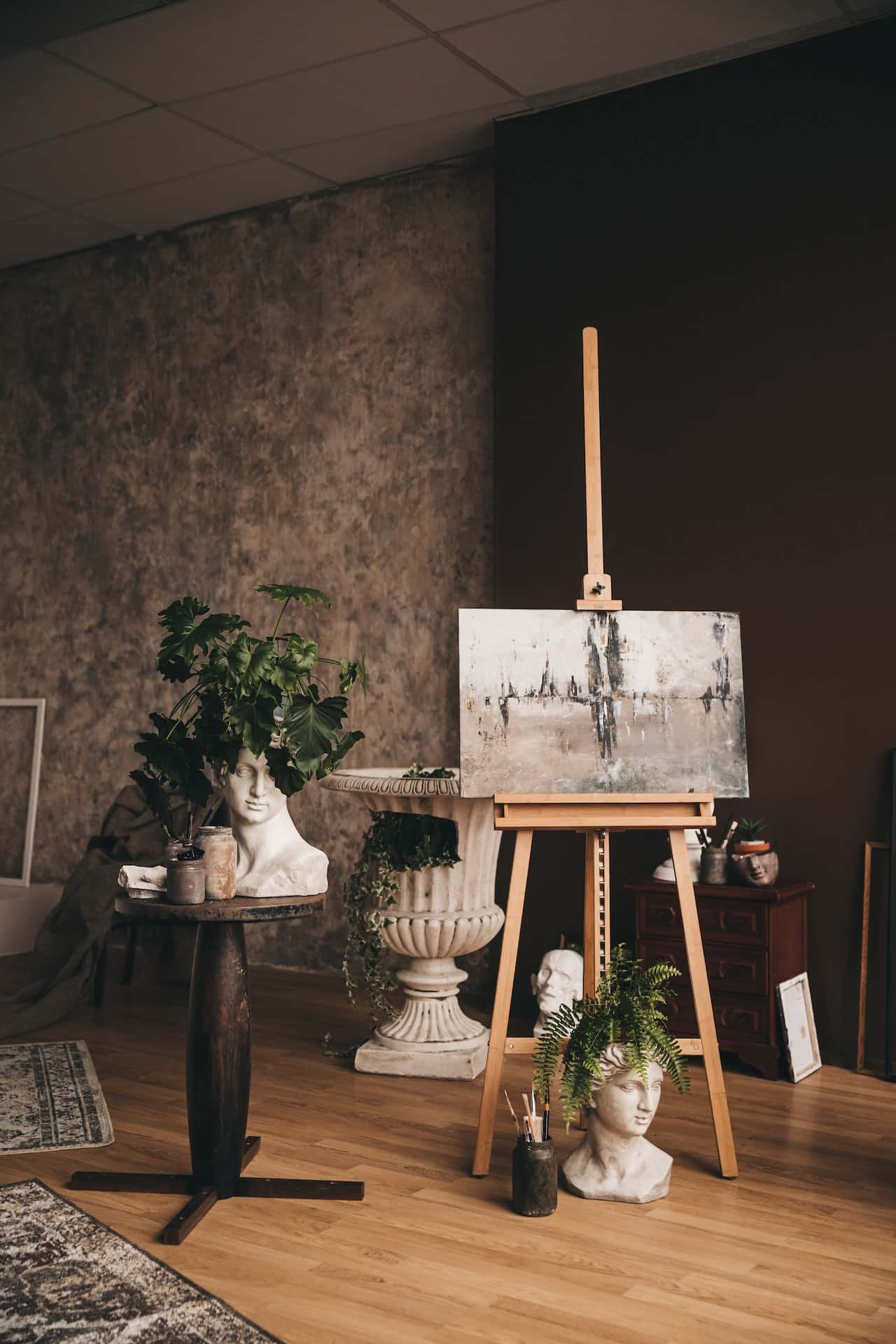
If you like to work in a large home studio design and think it is impossible to build a spacious home studio design in your home, let’s bust the myth first. There are design ideas that can give you your own large home studio design right at home. So, you do not have to compromise your need to nurture your creative flair.
If you barely use your living room area, you can easily turn this place into a functional large space for establishing your home studio design. Dining areas are generally large enough because they are designed to fit large dining tables.
So, dining rooms are an excellent option if you desire to implement a large home studio design, even at home. Place your art supplies near a well-lit area, as shown in the picture, to have an excellent working experience.
3. Transform Your Garage into a Private Studio
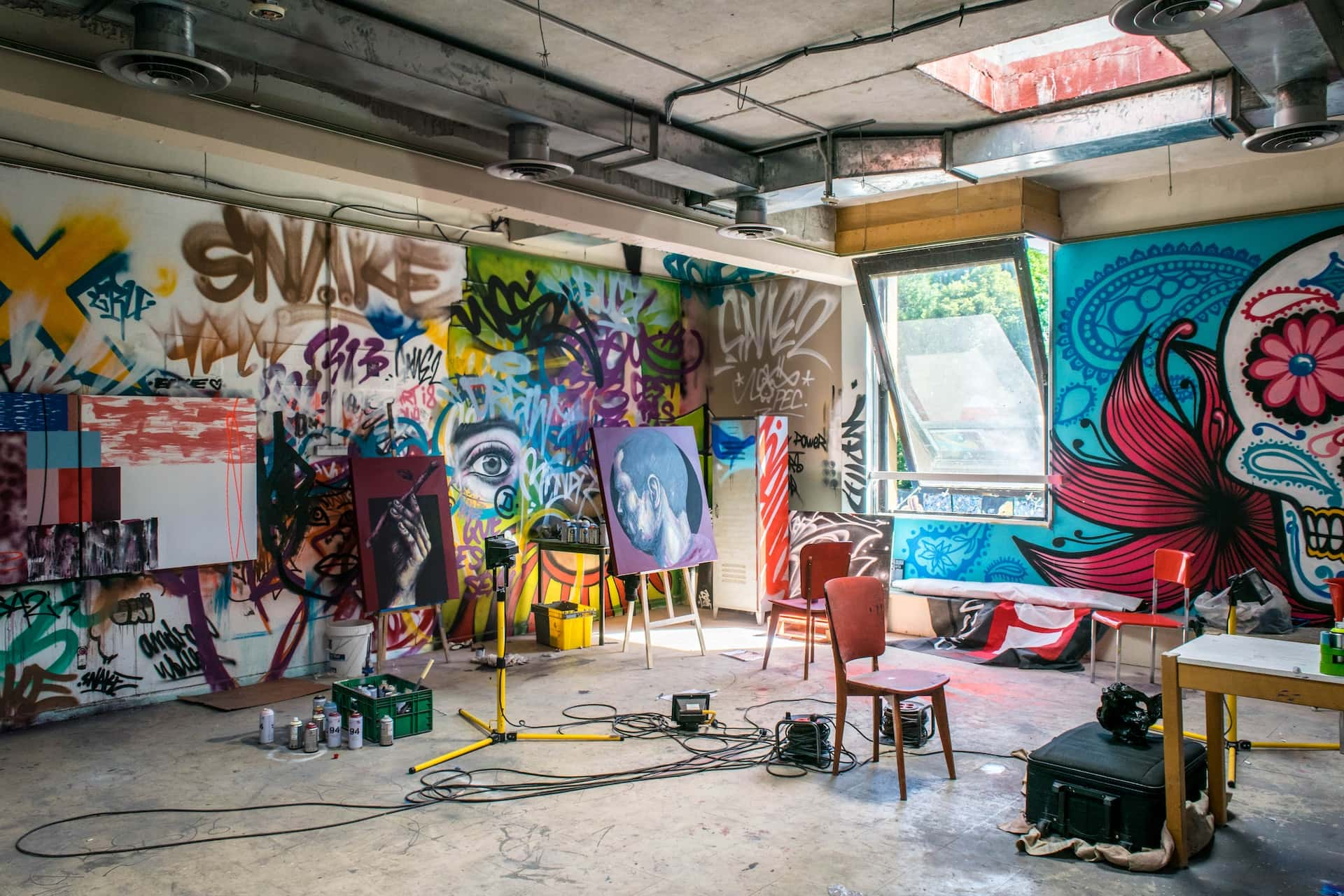
If you have a spare garage, it can give you a huge amount of space to create your own personal home studio design. If you have home recording studio design plans to implement, a garage is one of the best options to go for as it gives an almost optimal acoustic environment.
Building up your home studio design in your garage is also a good choice because it lets you have bigger and numerous canvases in one place, as shown in the picture. The ample light and heat in a garage also make it one of the best choices for making pottery or other art. You may paint the walls of the garage to get rid of the mundane vibe, along with introducing a vibrant studio feel, as shown in the picture.
4. A Great Idea to Make the Area Under the Stairs Functional: Turn the Space into a Studio
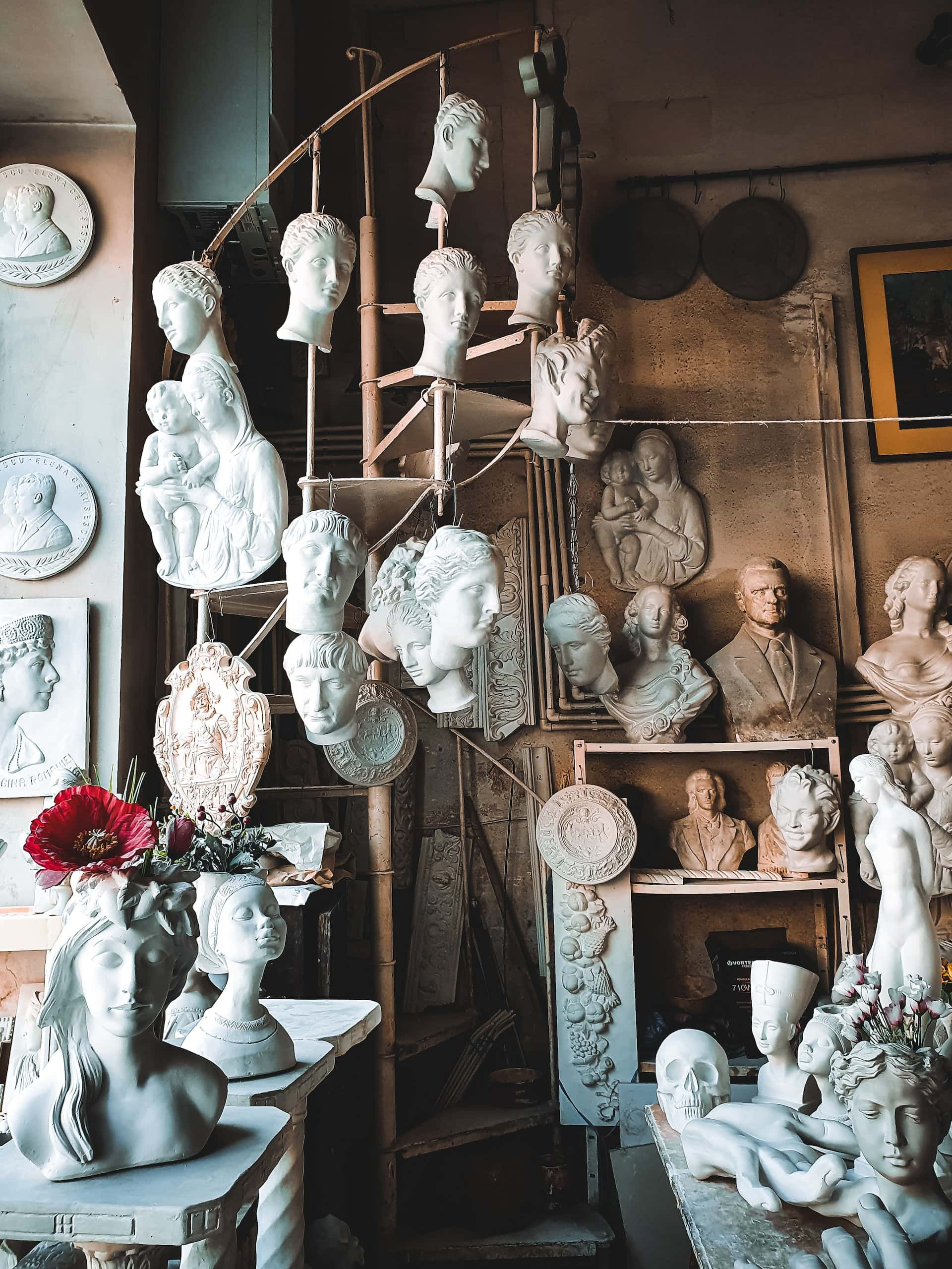
The space under the stairs generally goes unnoticed, and people barely make use of this space. A maximum of them put junk underneath the stair space as it is not a very accessible area. However, if you are seeking a quiet and private place to make your home studio design, this space can work wonderfully, as shown in the picture. If you make sculptures and art pieces, you may hang them from the staircase railing, as shown in the picture, to dry. You may put in fold-down tables to carry on your artwork comfortably.
5. Utilise Your Loft Area by Transforming It into a Studio
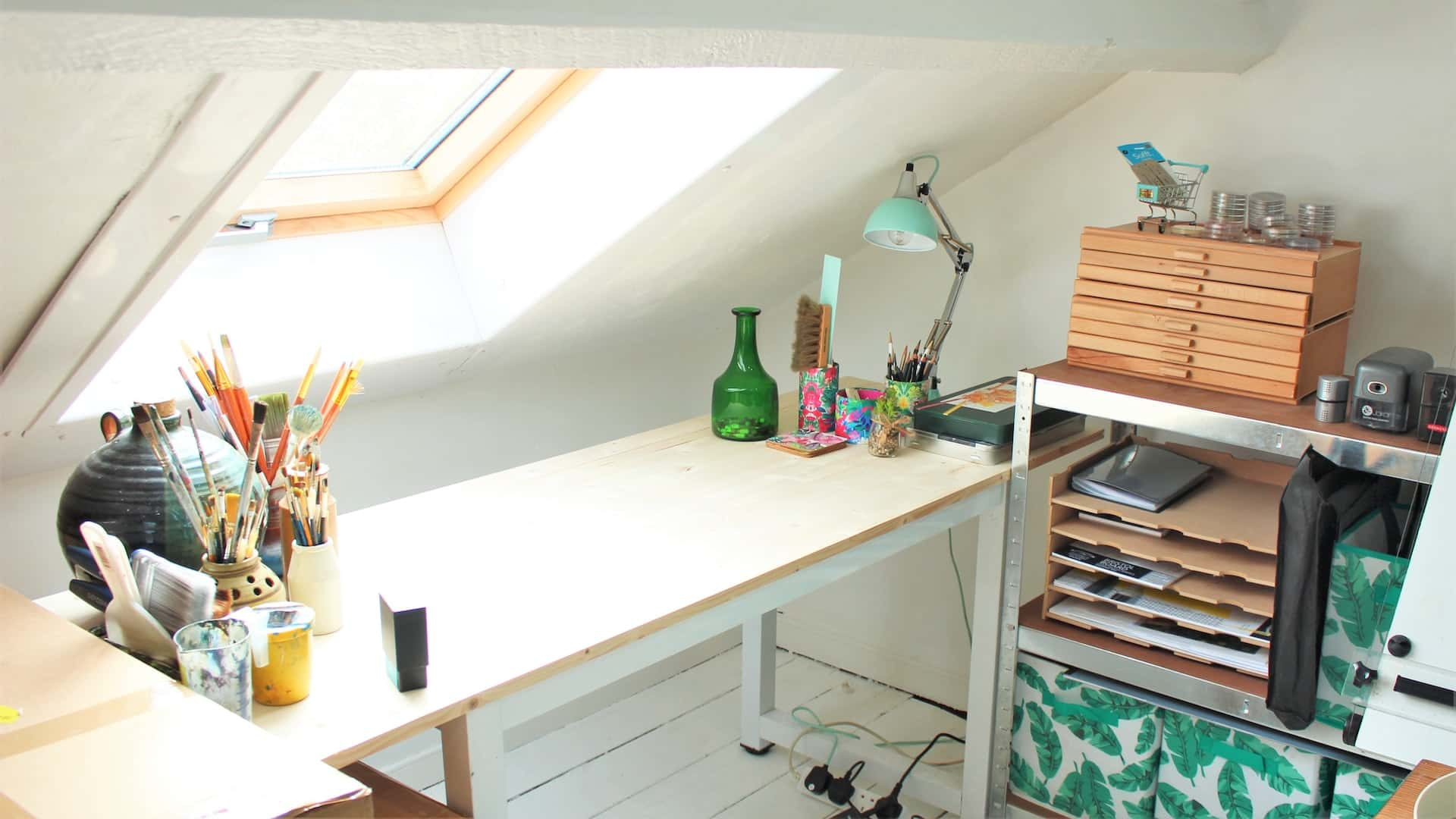
Are you confused about creating a home studio design because of the distractions and disruptive noises from the neighbourhood? You should not worry much if you have an extra loft area in your house. Creating a private home studio design in a loft area, as shown in the picture, is beneficial for artists to satisfy their creative hunger and gives a large space if you want to place bigger art equipment like pottery wheels, canvases, and racks (for drying purposes).
As shown in the picture, big windows on the ceilings of the loft area, also help to enter ample light into your home studio design, making the space look even bigger and clearer. To prevent damage to your artwork, make sure your home studio has enough heating and cooling facilities.
6. Timber Flooring + Vibrant Wall Decoration = Achieve a Subtle Chicness in Your Home Recording Studio Decor

Are you looking for home design studio ideas that have a harmonising effect to achieve a subtle chicness? Then, opting for a timber floor along with contemporary, vibrant wall colours to set your home studio design, as shown in the picture, is an excellent choice.
The timber flooring, as shown in the picture, not only adds value to the aesthetics of your home recording studio design but also acts as a great sound reflector to help you achieve high-quality audio recording.
7. Make Use of Your Living Area in Two Ways: A Home Fashion Studio and a Dining Area
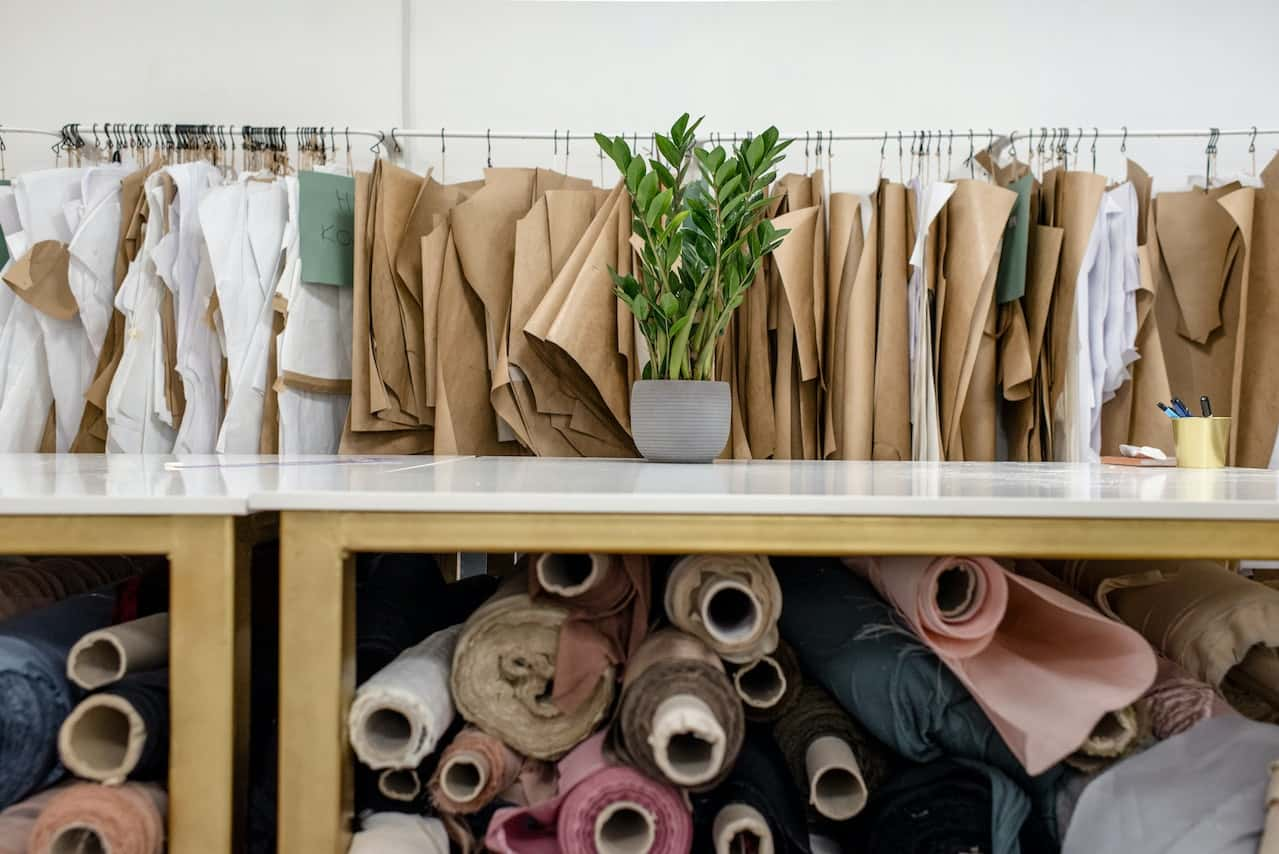
Are you looking for perfect home fashion design studio ideas to convert any of your home space into a functional fashion design studio? Well, you can choose the path of using a home space in two ways to maximise the room. For instance, you may use clever design ideas to make use of your living room both as a fashion design studio at home and as a dining area, as shown in the picture.
Opt for a large dining table like the one in the picture with a spacious rack beneath it. You will be able to use this table not only as a dining area but also as your workspace as a fashion designer. The space beneath the tabletop will allow you to store fabrics in large amounts. You may use a rolling cloth hanger that you can keep in the room while working and hide it elsewhere when you want to use this space as a dining area.
8. Make Use of Your Closet Area by Turning It Into Your Art Space
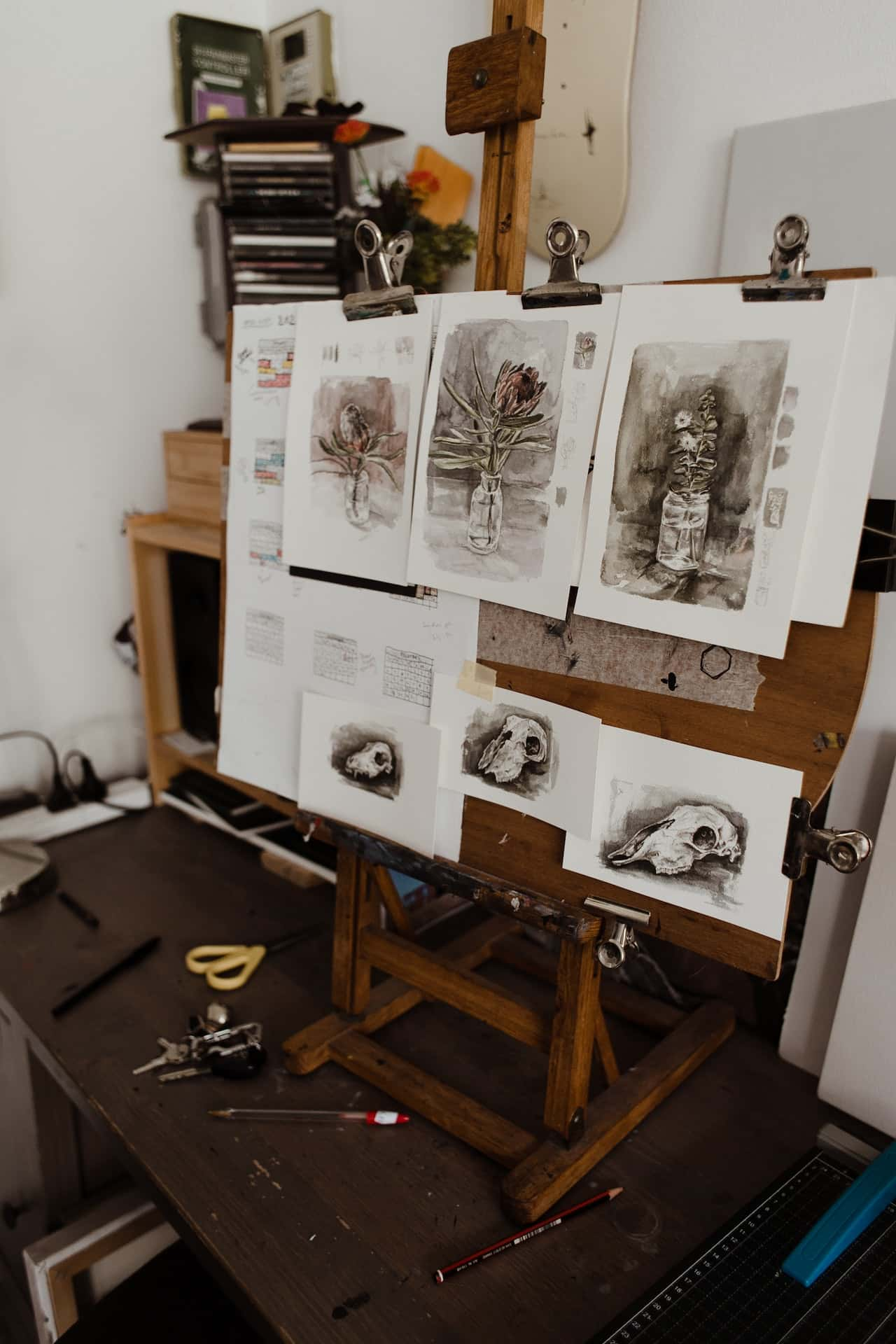
A home studio design should have all the favourite features of the owner because this space helps them to work on their creative flair and instinctive ability to be productive. Meeting all the criteria in a home studio design sometimes becomes difficult because of space restraints. However, if you would like to have a cosy atmosphere in your small home studio, it is easily achievable.
As shown in the picture, you can easily convert a spare closet into a cosy and comfortable home studio. If you want to make space in your closet area to create your fancy home studio, you need to clear out the place by putting your garments, footwear, and other accessories in totes.
After that, you may place them under a bed. Opt for a small workstation, an easel, or a fold-down desk when planning an art studio in a closet. Remember to use the existing shelves to store your creative equipment as well!
9. Take Up a Corner of Any Room to Create a Mini Home Art Studio
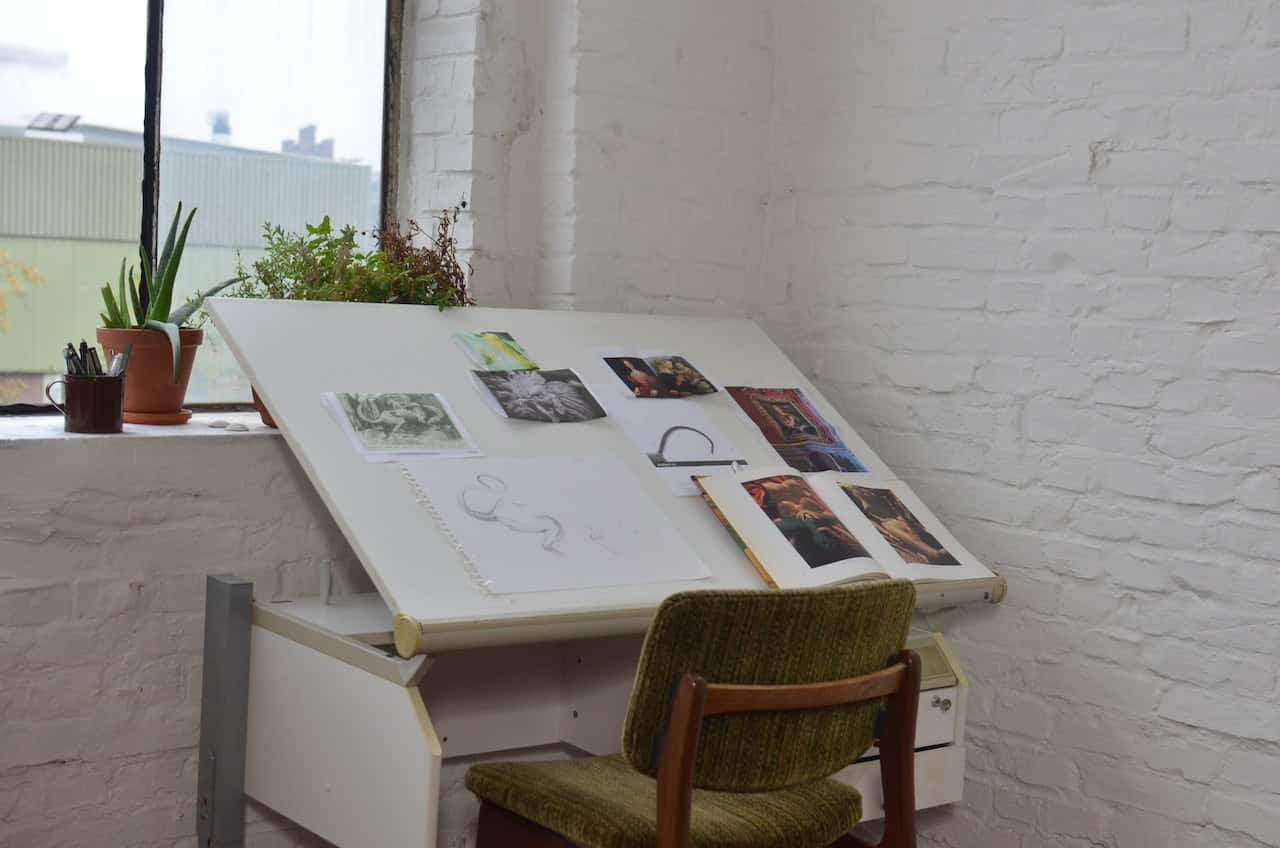
Are you looking for a mini art space in your home? Well, any corner of the room that you find cosy and comfortable would serve best for this purpose. All you have to do is place a workstation and some shelves with baskets to hold creative supplies in your favourite corner of the room, as shown in the picture. Any corner near the window (as shown in the image) works best as an art space because it lets the light in.
10. Design Your Home Studio With Greenery to Create a Calming Effect
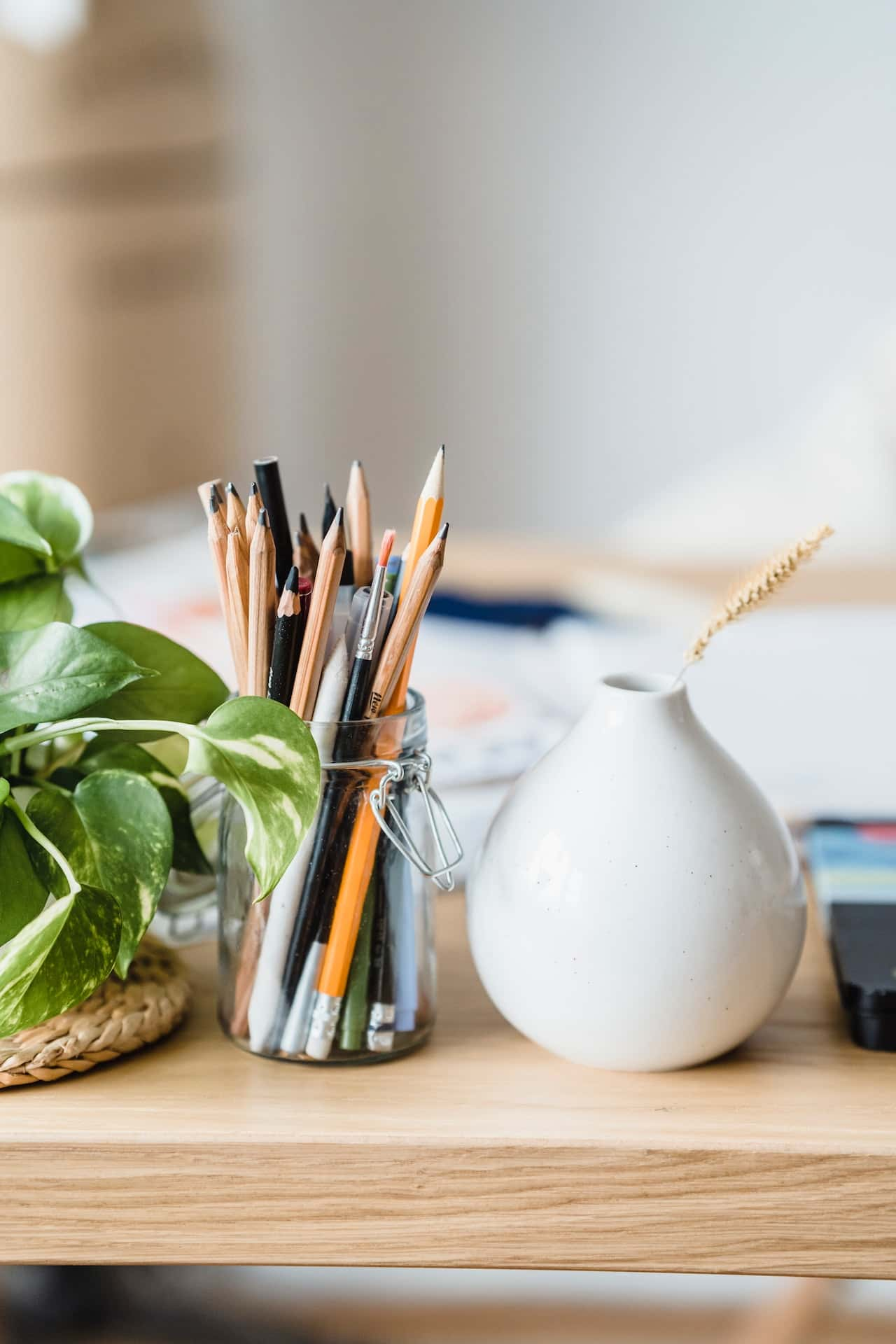
Are you a nature-loving person? Do you find inspiration from nature to nurture your creative urges? Then adding greenery to your home studio, as shown in the picture, makes perfect sense. The green plants also have a soothing effect that is capable of making our minds calm and peaceful. As an artist, what other mindset can work best for you to inspire you to create art?
11. Keep Your Home Studio Design Uncluttered with a Rolling Art Cart to Store Art Supplies
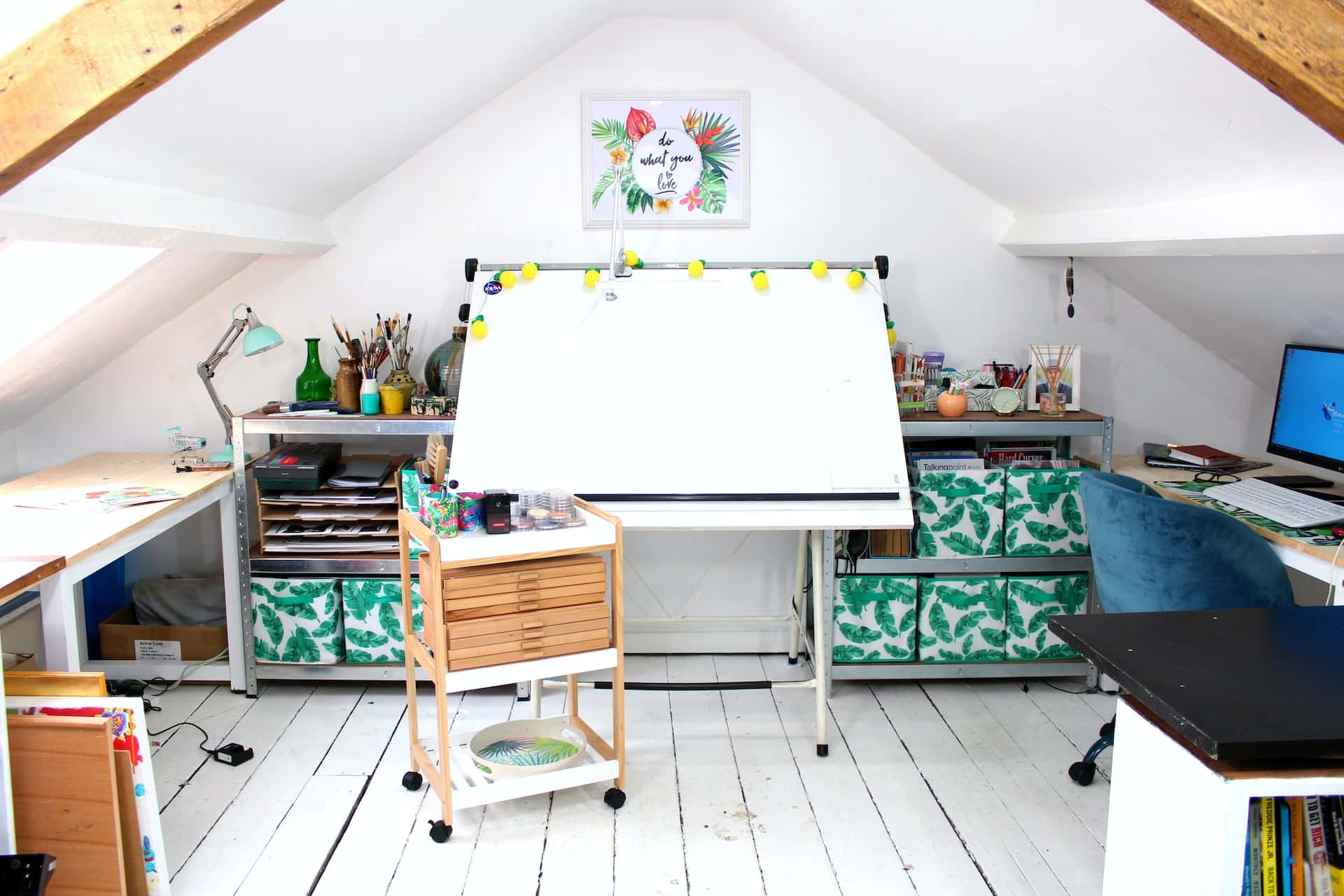
Are you that person whose favourite work corner keeps changing? This must have led you to move all over the spaces of your home studio, and you have always scattered your art supplies in every corner of your studio. This creates a cluttered and untidy vibe in your studio.
You can opt for a rolling art cart (As shown in the image) to hold your art supplies to get rid of a cluttered home studio. You can move the rolling art cart to any corner of the room as per your choice without creating any mess. It not only helps you to have a clean studio but also clears your mind to work on your art piece.
12. Adorn Your Home Studio Wall with DIY Creations to Give It a Unique Focal Point
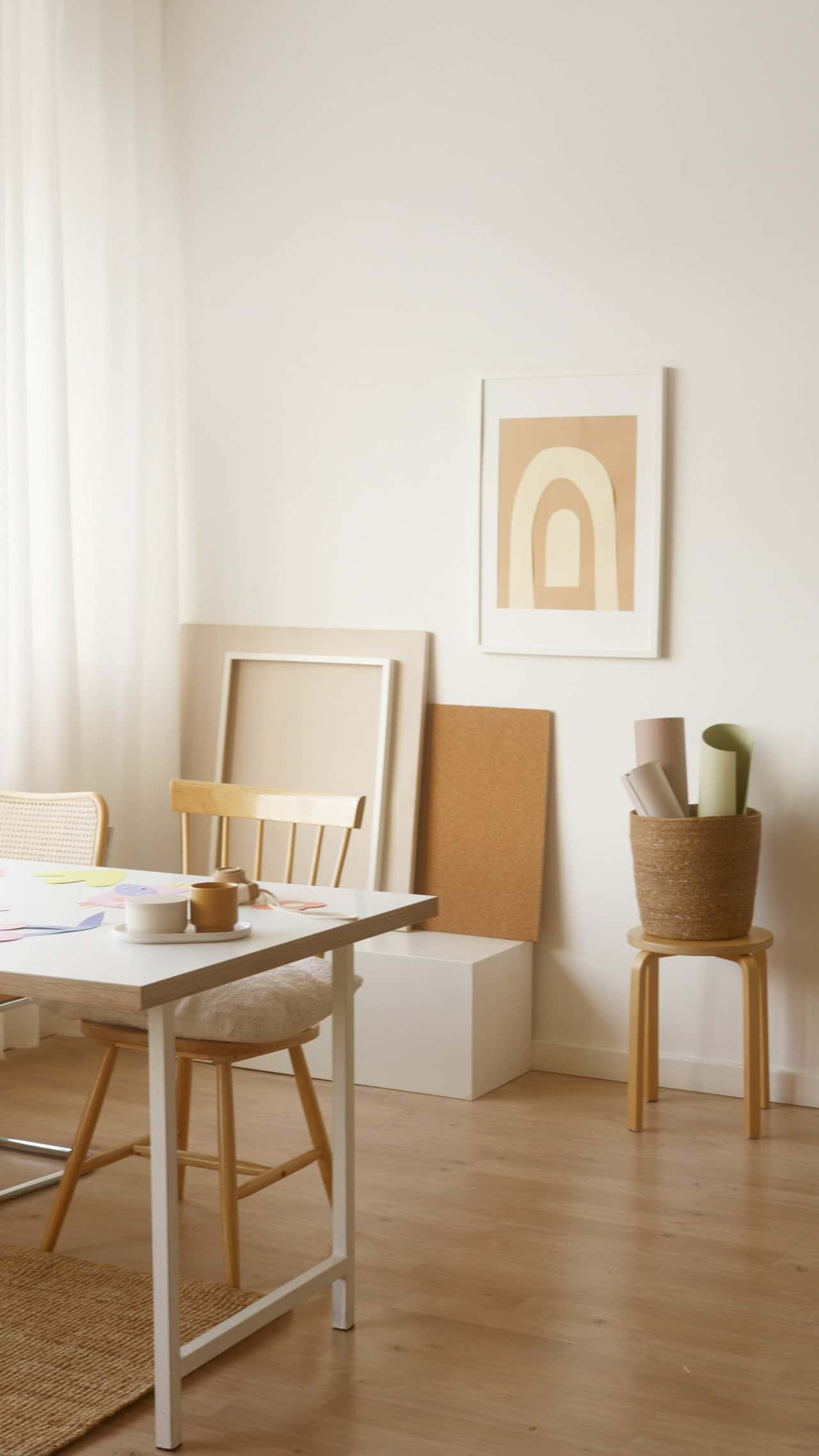
If you are in search of a design element to make it a focal point of your home studio, the best way to achieve it is to incorporate a self-made art piece onto the wall. This gives your studio character and makes it feel more private.
Opting for a simple and neutral-coloured art piece, as shown in the picture, is one of the best choices to achieve a subtle yet elegant look in your studio room.
Conclusion:
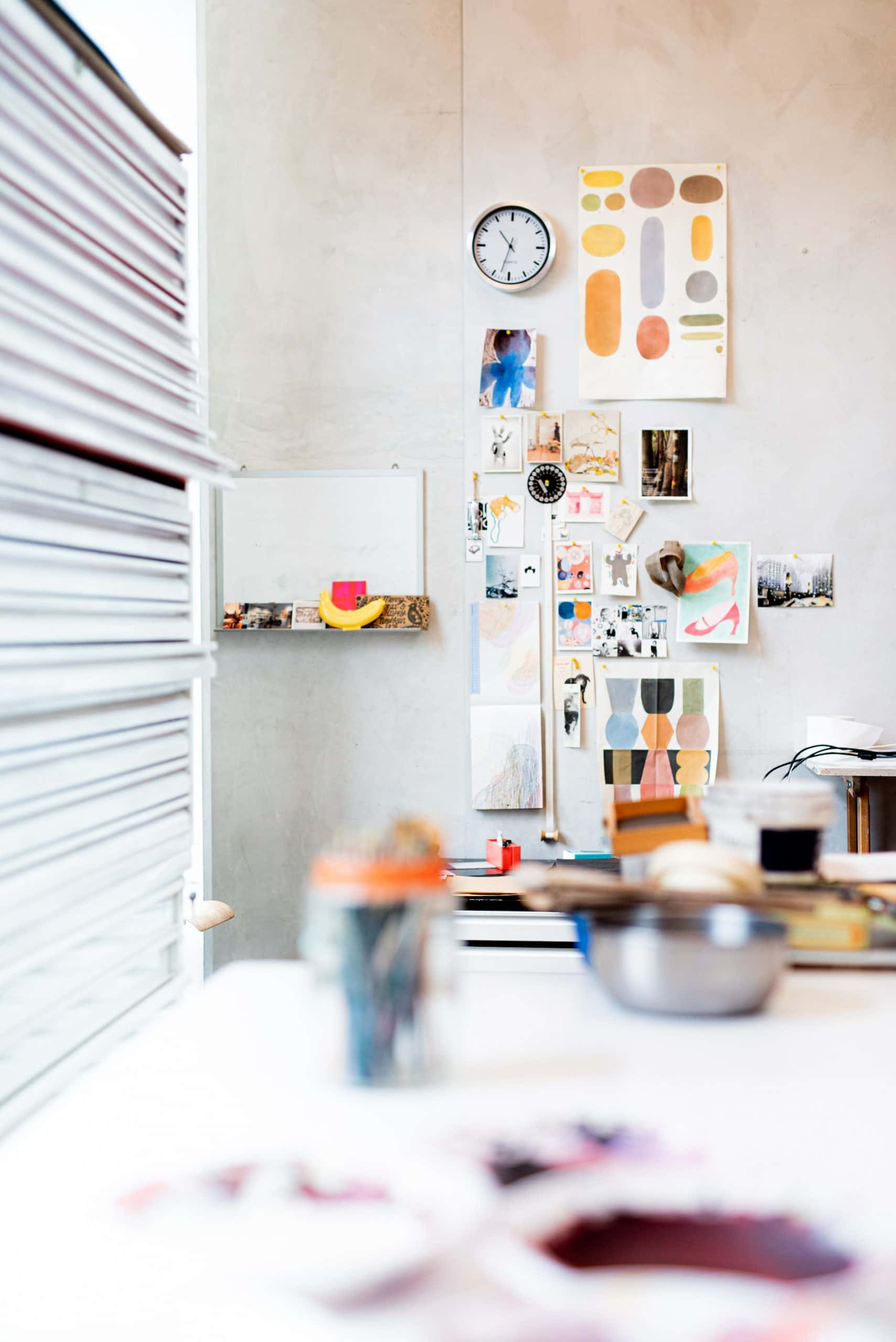
An artist’s workspace or studio plays a major role in creating an art piece as it sets the mood of the artist. However, sometimes it becomes an expensive investment to afford a studio. The above home studio design ideas are excellent solutions for that issue.
If you want to get more detailed assistance in creating your home studio design, you may get in touch with our professionals at Homelane.
FAQs
1. How Much Space is Used for Home Studios?
The demand for setting up home studios has been increasing daily because people choose unconventional career paths like making YouTube videos, creating art pieces, etc. Making a home studio requires a minimum amount of space to build the area accurately. Generally, you should at least allot 100 square feet if you are thinking of creating a home art studio. However, you can customise the space size as per your requirements.
On the other hand, if you are thinking of building a home recording studio, the space requirement is slightly high because the recording studio requires installing different types of gadgets and sound systems. The home recording studio setup will require enough room to fit a desktop system, a sound interface, and a microphone setup. The typical 10-foot by 13-foot room with 8.5-foot ceilings will be perfectly adequate in most home spaces.
It is needless to say that having more room to expand the recording studio is always advantageous because it leaves you space for any future installation you need in your recording space. The extra room also helps you to achieve an uncluttered space. It makes you able to record without feeling claustrophobic.
2. How Do You Design a Home Studio?
- Find a space in the house that is large enough to accommodate all your essential recording equipment to fit in the home studio.
- Install a desktop computer with a powerful configuration to support your recording needs.
- Select a sound interface. How many inputs you require or how many sources you intend to record simultaneously must be taken into account when choosing an interface.
- Arrange and install microphones and integrate the whole recording system.
- The next thing to think about is how you intend to utilise the area once you have picked the recording apparatus and prepared the room for it. Planning the room’s arrangement for ergonomics and maximum effectiveness is usually beneficial. This is crucial if you do not wish to strain to operate your equipment and have a small amount of room.
- Add acoustic protection to your home studio to keep outside noise out and create a trouble-free recording environment.
- The correct amount of sound reverberation (reflection of sound energy), as well as sound absorption, is necessary to achieve optimal sound recording quality.
- Hard surfaces like concrete and hardwood are very good sound energy reflectors, whereas creating soft surfaces like rugs, drapery, couches, and wall hangings helps to absorb the sound. So, designing the home studio with both of the components is mandatory to maintain good sound quality.
3. Do You Need a Sound Engineer for Your Home Studio?
Suppose you have a good sense of listening to sound to detect negligible nuances or you possess the expertise to achieve optimal sound quality. In that case, you will be able to design your home studio by yourself without consulting with any sound expert.
However, if you are new to this field or do not know how to achieve the perfect sound quality, you should consult a sound engineer to determine if the home studio is perfectly built up to achieve optimal sound quality.




